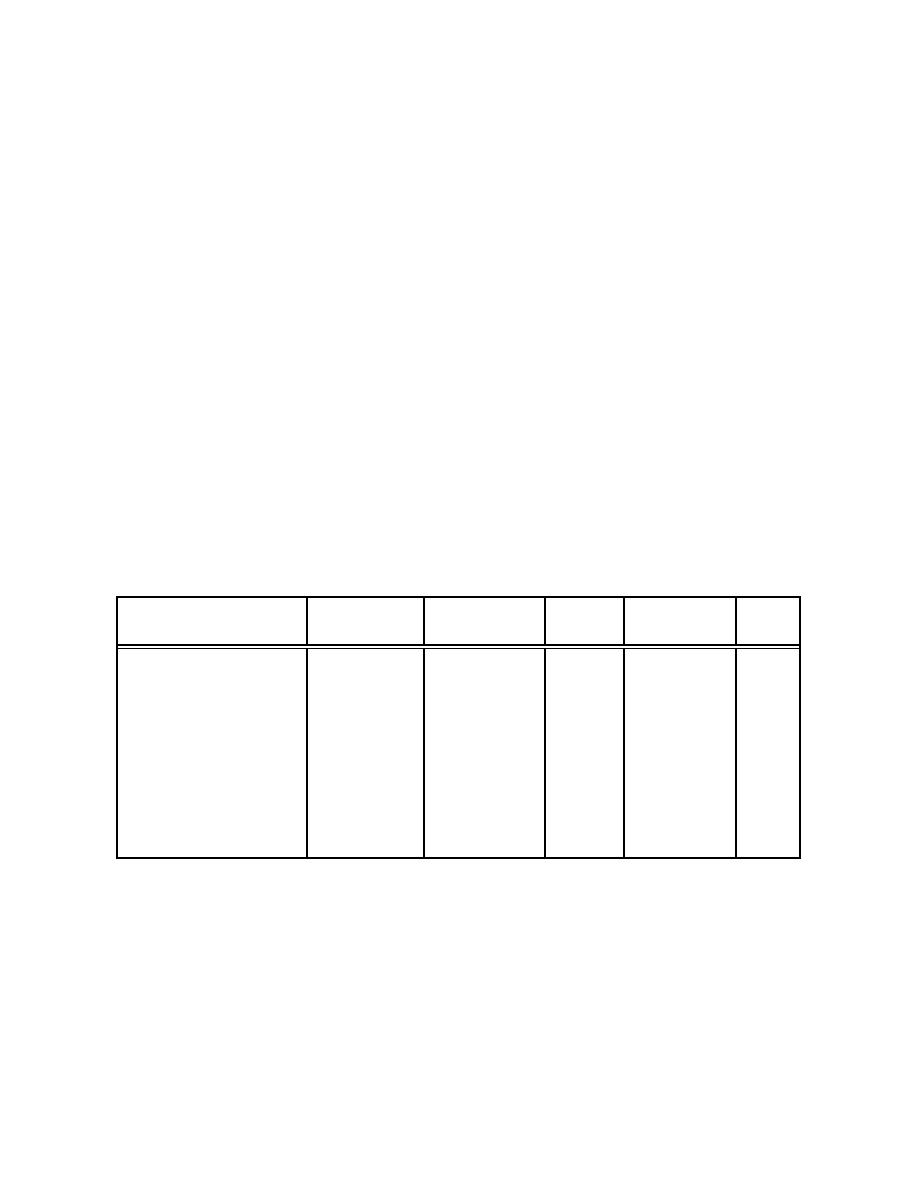 |
|||
|
|
|||
|
Page Title:
UNHand Air-Dried UNH on Various Surfaces During a Shallow Pool Gasoline Fire |
|
||
| ||||||||||
|
|  DOE-HDBK-3010-94
3.0 Liquids; Organic, Combustible Liquids
3.3.6
U N H an d A ir-D ried U N H on V ariou s S u rfaces D u rin g a S h allow P ool G as olin e
F ire
Experiments were performed by Mishima and Schwendiman (1973) in a wind tunnel to
measure the ARF and RF of uranium from various surfaces (sandy soil, sandy soil with
vegetation cover, stainless steel and asphalt) at windspeeds of 1.0 m/s and 10 m/s.
Windspeed measurements were made at the centerline of the 2-ft x 2-ft wind tunnel and
therefore represent much higher windspeeds (50 mph to 60 mph) at a standard 10-m height.
UNH was placed upon the surface held in a 22-inch diameter flange in the floor of the wind
tunnel. In some experiments with sandy soil, the UNH was allowed to air-dry for several
days prior to testing. One gallon of gasoline was poured over the surface, ignited and the air
drawn over the burning surface. In some cases, the airborne particles were only sampled
during the actual burning; in other cases, the airborne particles were collected for much
longer periods. The ARFs and Rfs measured are reproduced in Table A.3 and the apparatus
shown in Figure A.3 in Appendix A. The relevant data are listed in Table 3-15.
Table 3-15. M easured ARFs and Rfs for Uranium Airborne During Gasoline Fires
on Various Surfaces Involving UNH and Air-Dried UNH
(Table III - M ishim a and Schwendim an, August 1973)
Uranium
Air Velocity,
Rate
Substrate
ARF
RF
Form
m /s
Fraction/hr
Sandy soil
liq. UNH
1.0
1.7E-5
3.0E-6
0.75
4.0E-2*
10
5.4E-3
0.40
1.0
9.6E-4
0.78
2.0E-4
Vegetation on sandy soil
air-dried UNH
10
2.0E-3
0.86
4.0E-4
1.0
7.4E-5
0.64
1.0E-5
4.0E-4
0.18
6.0E-5
1.2E-3
0.32
2.0E-4
10
Asphalt
1.0E-3*
4.1E-4
0.70
1.0
liq. UNH
2.4E-3
0.68
10
6.0E-3
Stainless steel
1.4E-2
0.40
1.0
6.0E-2
liq. UNH
1.14E-1
0.34
10
6.0E-1
*
Calculated based on actual burn time for gasoline fire.
The ARFs range from 1.7E-5 (soil, 1.0 m/s) to 1.14E-1 (stainless steel, 10.0 m/s). The data
are extremely limited with single values at some sets of conditions (surface, windspeed).
The type of surface may have some effect in that the liquid can be absorbed into the substrate
or the substrate can conduct heat. If the substrate conducts heat well, the liquid can be
boiled rapidly generating conditions much more favorable to generation of airborne liquid
droplets. In extreme cases for any surface, a possible mechanism for suspension of liquids
Page 3-48
|
|
Privacy Statement - Press Release - Copyright Information. - Contact Us |